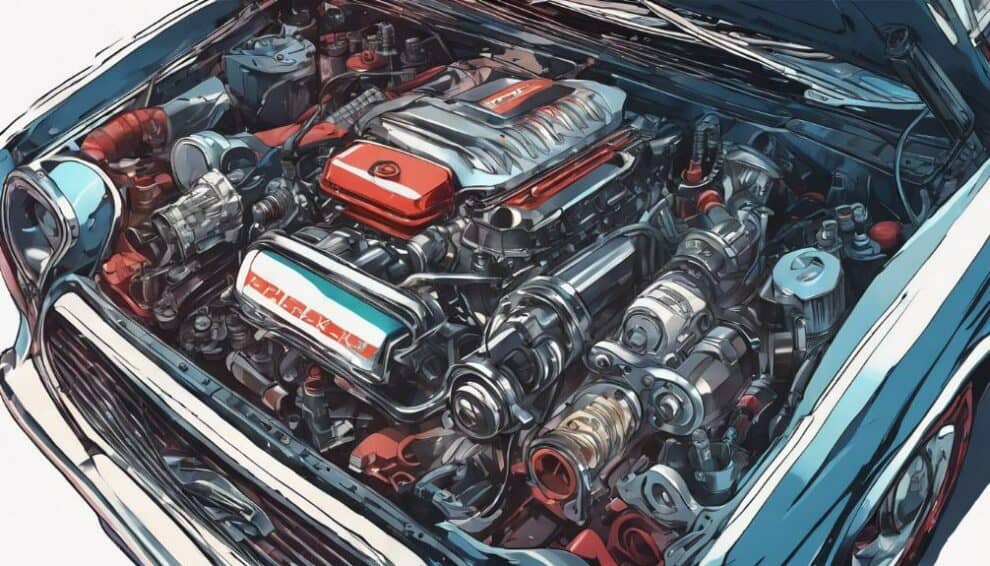When your car’s engine light flicks on with a P0303 code, it signals a misfire in Cylinder 3. Your first step should be checking the spark plugs and ignition coils, but there’s more to it.
This code can point to a range of issues that might be messing with your engine’s performance. Let’s dive into a straightforward troubleshooting guide to help you nail down the exact cause and get your vehicle running smoothly again.
Understanding the P0303 Trouble Code
When diagnosing a P0303 trouble code, focus on pinpointing the specific cylinder causing the misfire.
Understanding engine misfires is crucial in resolving the issue efficiently. A misfire occurs when there’s a lack of combustion in the cylinder, leading to rough engine performance.
Diagnostic trouble codes, like the P0303, indicate which cylinder is experiencing the misfire. In this case, cylinder 3 is the culprit.
To understand the P0303 trouble code, you must delve into the potential causes of a misfire in cylinder 3.
Common culprits include faulty spark plugs, ignition coils, fuel injectors, or compression issues. By identifying the root cause, you can address the problem effectively. Ignoring a misfire can lead to increased emissions, reduced fuel efficiency, and potential damage to the catalytic converter.
Checking Spark Plugs and Ignition Coils
To diagnose a cylinder 3 misfire, start by checking the spark plugs and ignition coils for potential issues. Ignition coils are responsible for providing the spark that ignites the air-fuel mixture in the combustion chamber, while spark plugs play a crucial role in delivering this spark at the right moment.
Here is a table to help you understand how to check these components effectively:
| Component | What to Check | Normal Range |
|---|---|---|
| Ignition Coil | Coil resistance | 0.5 – 2 ohms |
| Spark Plug | Plug gap | 0.028 – 0.060 inch |
When checking the ignition coil, use a multimeter to measure the resistance between the primary and secondary terminals.
A healthy coil should typically have a resistance reading within the range of 0.5 to 2 ohms. For the spark plug, ensure the electrode gap falls between 0.028 to 0.060 inches. Any deviation from these values could indicate potential issues causing the cylinder 3 misfire.
Inspecting Cylinder 3 Fuel Injector
Inspect the fuel injector in cylinder 3 for any potential issues that may be contributing to the misfire. When dealing with a cylinder 3 misfire indicated by the P0303 code, it’s crucial to check the fuel injector thoroughly. Here are some steps to help you inspect the cylinder 3 fuel injector effectively:
- Inspecting wiring connections: Ensure that the wiring connected to the fuel injector is in good condition, free of any damage or corrosion. Faulty wiring can lead to improper fuel injection and potentially cause a misfire.
- Cleaning fuel injectors: Over time, fuel injectors can get clogged with debris or deposits, affecting their performance. Use a suitable fuel injector cleaner to remove any build-up that could be obstructing the injector’s function.
- Check for leaks: Inspect the fuel injector for any signs of leaks, which could lead to a drop in fuel pressure and cause a misfire in cylinder 3.
- Verify injector operation: Test the fuel injector to ensure it’s functioning correctly and delivering the right amount of fuel to the cylinder for combustion.
How to Troubleshoot Misfire Codes in Different Cylinder Numbers?
When faced with a troubleshoot p0306 code, it indicates a misfire in cylinder 6. To troubleshoot misfire codes in different cylinder numbers, start by checking for vacuum leaks, inspecting spark plugs and ignition coils, and testing the fuel injectors. Additionally, a compression test can help identify any internal engine issues.
What Are the Common Symptoms of a Misfire and Knock Sensor Issue?
If you are experiencing engine misfires, rough idling, or decreased acceleration, it could be a sign of a fix p0330 knock sensor issue. It’s essential to address these symptoms promptly to prevent further damage to your vehicle’s engine. Have a professional mechanic diagnose and resolve the issue to avoid costly repairs.
Testing Compression in Cylinder 3
For accurate diagnosis of cylinder 3 misfires, testing the compression in cylinder 3 is a critical step in identifying potential engine issues.
Compression testing tips involve ensuring the engine is warm, removing all spark plugs, and disabling the ignition system.
Connect a compression gauge to cylinder 3 and crank the engine several times to obtain readings. Make sure to compare the compression reading in cylinder 3 to specifications provided by the manufacturer.
If the compression is low, it could indicate issues like worn piston rings, a blown head gasket, or valve problems, which could lead to a misfire.
Diagnostic procedures for low compression may include a leak-down test to pinpoint the exact cause of the compression loss in cylinder 3.
Proper compression levels are vital for engine performance, and addressing compression issues promptly can prevent further damage.
Addressing Vacuum Leaks and Other Factors
If you suspect a cylinder 3 misfire, addressing vacuum leaks and other factors is crucial for resolving potential engine issues efficiently. When dealing with a P0303 trouble code, the vacuum system plays a significant role in your engine’s performance.
Here’s what you should consider:
- Check for vacuum leaks: Inspect hoses, gaskets, and connections for any signs of wear or damage that could lead to vacuum leaks. Even a small leak can disrupt the air-fuel mixture ratio, affecting cylinder 3’s combustion.
- Test the PCV valve: A malfunctioning Positive Crankcase Ventilation (PCV) valve can cause a vacuum leak, impacting engine performance. Make sure it’s functioning correctly.
- Inspect the intake manifold: Leaks in the intake manifold can also lead to vacuum leaks. Thoroughly examine the manifold for cracks or loose connections that could affect cylinder 3.
- Check the brake booster: A faulty brake booster can create a vacuum leak, negatively impacting engine performance. Ensure the booster is operating as intended to maintain proper vacuum levels.
As an Amazon Associate we earn from qualifying purchases.










